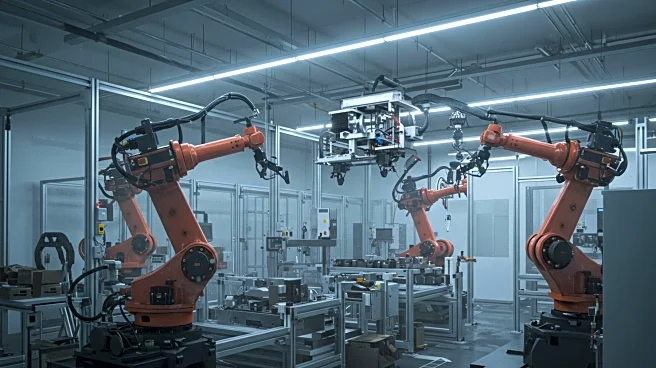Rapid Read • 7 min read
The Dodge Construction Network has reported a significant increase in construction planning activities, with the Dodge Momentum Index (DMI) rising by 20.8% in July. This index, which predicts nonresidential projects entering the planning stage, indicates a surge in commercial and institutional planning, which increased by 14.2% and 35.1% respectively. The growth is attributed to several large projects, including data centers, research labs, hospitals, and service stations, entering the planning phase. Despite previous delays due to tariff uncertainties, developers are now moving forward, accepting higher costs. However, some developers remain cautious, which may lead to uneven planning activity in the future. Massachusetts' Department of Transportation has also contributed over $700 million for service plaza projects, further boosting planning activities.
AD
The surge in construction planning is a positive indicator for the U.S. construction industry, suggesting a potential increase in construction spending in the coming year. This growth could stimulate economic activity, create jobs, and enhance infrastructure. The focus on data centers and healthcare facilities reflects the growing demand for technological and healthcare advancements. However, the ongoing tariff pressures on materials like steel and aluminum could continue to challenge budget management for developers. The increase in planning activities also highlights the resilience of the construction sector amidst economic uncertainties, potentially benefiting stakeholders such as construction firms, suppliers, and local economies.
As planning activities continue to rise, the construction industry may see a corresponding increase in actual construction projects in the next year. Developers and stakeholders will likely monitor economic conditions and material costs closely to manage project budgets effectively. The ongoing volatility in planning activities suggests that while some projects will proceed, others may face delays or cancellations. The industry will need to adapt to these fluctuations, potentially exploring alternative materials or methods to mitigate cost pressures. Additionally, the focus on data centers and healthcare facilities may drive further innovation and investment in these sectors.
AD
More Stories You Might Enjoy










